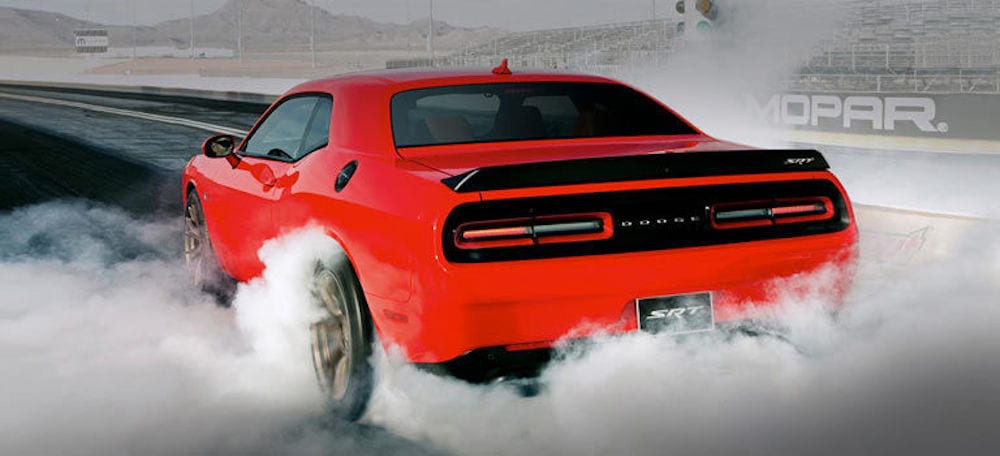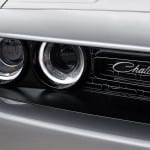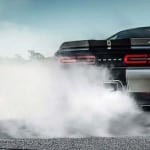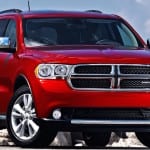The 2016 Dodge Challenger in Miami is the most powerful Challenger ever produced. More than that, it’s also the strongest muscle car ever. This is quite an impressive feat for Dodge, and this successful revamp of an icon is placing the brand first in the muscle car competition. Maybe not first on the official charts – the Challenger is still behind the Camaro and Mustang even after some incredible sales growth – but who cares? Dodge certainly doesn’t, and neither do Challenger fans. The 2016 Challenger is strong enough to wipe the track with both the Camaro and Mustang at the same time, and still have some horsepower left over. Not to mention, it’s also got the legendary look that’s associated with the old-school muscle cars.
Let’s breakdown the 2016 Challenger, then gleefully look at how it stomps the current competition.
Breakdown of the Challenger
The 2016 Dodge Challenger is one of those timeless vehicles. Therefore, Dodge made sure it had a timeless design to match. Even better, this timeless design is matched by performance that’s legendary in the muscle car world, which means this Challenger has already been inducted into the hall of fame – at least in the eyes of muscle car enthusiasts. (Except Mustang and Camaro owners, of course. And they’re just jealous that their ponies aren’t as wild as this beast).
Look at Those Muscles!
For the 2015 redesign (which is the same design used on the 2016 model), Dodge really did resurrect an icon. They took the classic look of the Challenger, which was one of the best looking muscle cars, in my opinion, and added a modern flair to it.
The reason I call it a “modern flair” is because Dodge didn’t mess with the original shape of the car. It still has the same powerful and wide hood and aggressive stance, and the windshield and roof are essentially the same design. The sides still have powerful muscular contours, and the back still sits in that famous muscle car, Challenger stance: jacked up and angry looking.
What was revised with a contemporary edge, however, was the front-end design. It now sits lower than the old-school model, and the headlights and daytime running lights are slightly smaller than those on the original model. But, that’s okay because they look better this way. Also, the split-grille was broadened and now has a new crosshatch pattern slapped on it.
As you go up in trim and power, and add on more packages, the look only improves. Thankfully, Dodge was smart enough not to add too many bells and whistles. If they did, it would take away from the original iconic design.
Overall, the redesign was a huge success. The large amount of Challengers sold in 2015 and beginning of 2016 are a testament to that. But, I’m sure the earth-crushing performance had something to do with the increase in sales, too…
Raw, Unbridled Power
If I could use three words to describe the Challenger, particularly the SRT Hellcat, I’d use: Raw. Unbridled. Power. But before we jump into the Hellcat’s engine, let’s take a quick look at the other engines leading up to it.
3.6-liter Pentastar V6
The first engine is the 3.6-liter Pentastar V6 engine, which comes in at a solid 305 horsepower and 268 lb-ft of torque. Not bad, especially considering it gets up to 30 mpg highway. It’s the perfect engine if you want to make the tires squeak just a little bit, and still enjoy a coastal cruise.
5.7-liter Hemi V8
After the base engine, Dodge wasted no time jumping right into providing buyers some powerful options under the hood. The 5.7-liter Hemi V8 is just as iconic as the Challenger, and delivers 375 horsepower and 410 lb-ft of torque. Only two engines in, and the Challenger is already closing in on the performance of the 2016 Camaro SS.
6.4-liter Hemi V8
The 6.4-liter Hemi V8 is the engine that surpasses the 2016 Camaro SS (and most 2016 Mustang models), so why does the Challenger need a fourth engine? Simple, because it hasn’t quite beaten all the Mustang’s engines. The 6.4-liter V8 comes in at 485 horsepower and 475 lb-ft of torque, which is a staggering amount. But, wait! You ain’t seen nothing yet…
Supercharged 6.2-liter Hemi SRT Hellcat V8
Ah yes, the SRT Hellcat V8. Surely an engine that will go down in history as a landmark in muscle car performance. This supercharged beast pumps out 707 horsepower and 650 lb-ft of torque, which is completely unnecessary and absolutely awesome! This crushing beast puts the 2016 Challenger at the front of the steroid-induced market with a 0-60 mph time of 3.6 seconds, a quarter-mile time of 11.2 seconds, and a top speed of 199 mph.
Dodge understands that not everyone might want a Challenger that can do 0-60 mph in 3.6 seconds, which is why they have other engine options spread across ten different trim levels. That way, there’s something for everyone. But, for those who do want an SRT Hellcat, you’ll be happy to know this supercharged performance is putting the current competition to shame.
Compared to the Competition
First, let’s take a look at the engines of the competitors. The 2016 Camaro SS has an impressive engine – a 6.2-liter LT1 V8 engine – but it’s annihilated by the Challenger’s third engine option. The Camaro SS engine only puts out 455 horsepower and 455 lb-ft of torque, and doesn’t even come close to touching the Hellcat. Even the supercharged 6.2-liter V8 on the 2015 Camaro ZL1 is no match for the Hellcat, only coming in at a measly 580 horsepower and 556 lb-ft of torque.
But, enough about the Camaro. Let’s look at how the Challenger obliterates the Mustang! The Mustang does even worse than the Camaro ZL1, and the top-of-the-line Shelby GT350 has a 5.2-liter engine that only produces 526 horsepower and 429 lb-ft of torque.
The size of these engines also determines how fast these cars pound down the track, and the Challenger beats both of them.
0-60 and Quarter Mile Times
Like I said before, with the Hellcat’s equipment, the Challenger can reach 0-60 mph in 3.6 seconds, and hit a quarter mile in 11.2 seconds. The 2016 Camaro SS bests the Mustang in the 0-60 and quarter mile segments. The Camaro can hit 0-60 mph in 4.0 seconds flat, which is still 0.4 seconds slower than the Challenger, and can run a standing quarter-mile in 12.3 seconds. The Mustang? 0-60 mph in 4.3 seconds (3.9 for the GT350r), and 12.2 seconds for a quarter-mile.
As you can see, the quarter mile times of the Camaro and the Mustang are at least a second slower when compared to the Challenger, and the 0-60 mph times are close, but not close enough.
Price
The price of the 2015/2016 Dodge Challenger starts at an MSRP of $26,995. But, in order to get the supercharged 6.2-liter Hemi SRT Hellcat V8 in all it’s glory, you need to grab the Challenger SRT Hellcat trim, which is an MSRP of $64,195. But, is that really surprising? Performance like this is going to cost money and the other top-tier muscle cars are expensive as well.
It’s probably a good thing it’s that expensive, though. Imagine if everyone was driving around in one of these? There would be no mysterious allure every time you glimpsed one in your peripherals. It also wouldn’t become a legend if everyone owned one and this Challenger deserves to become a legend and a hallmark machine in the muscle car world.







